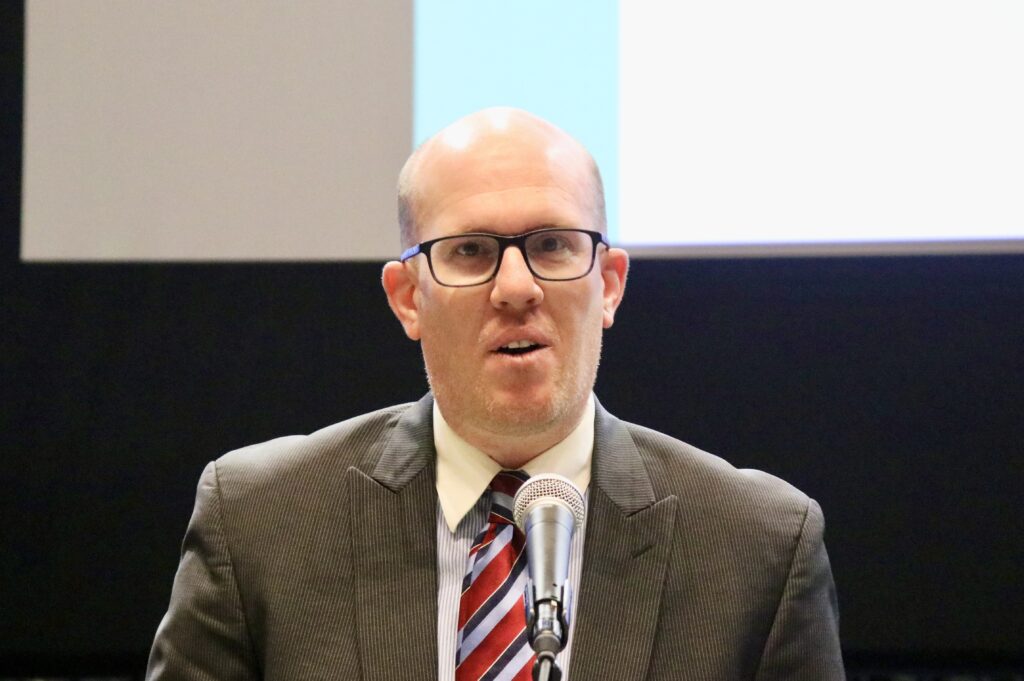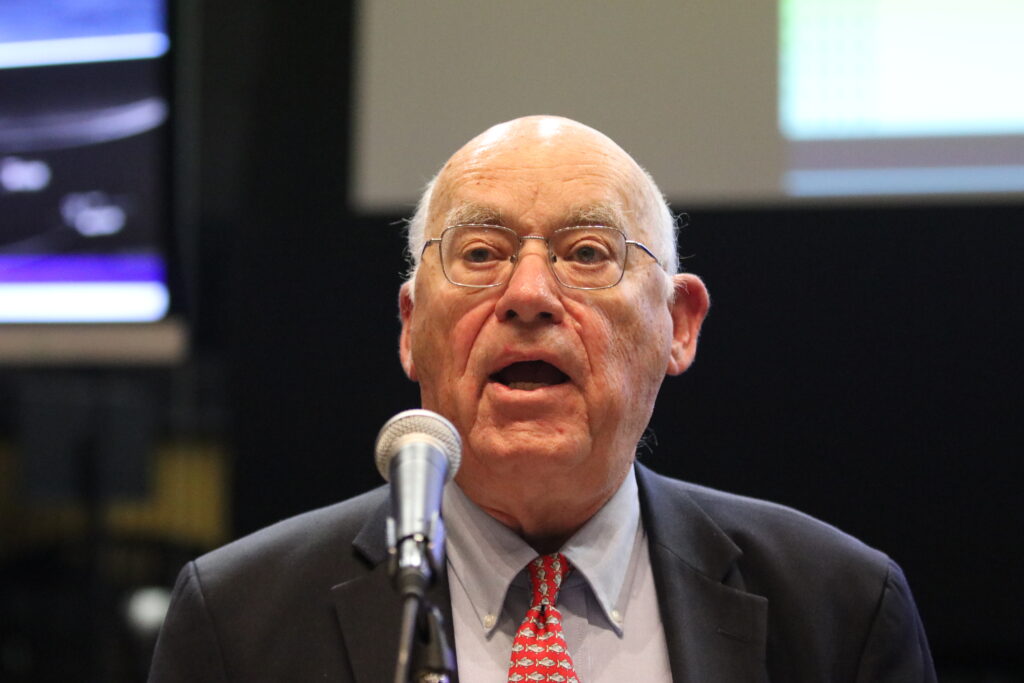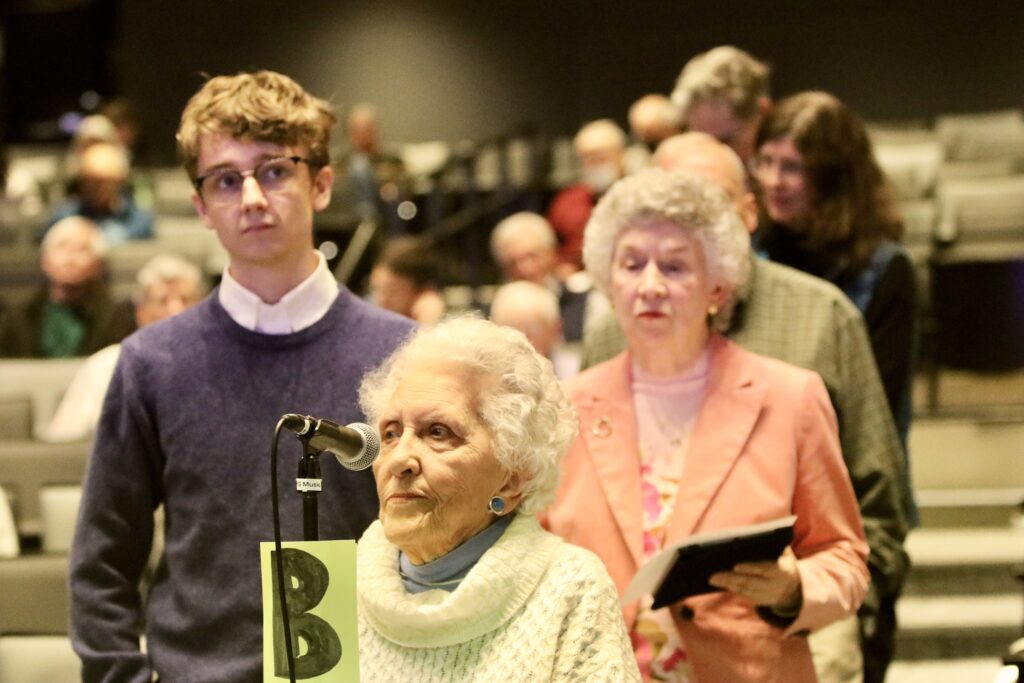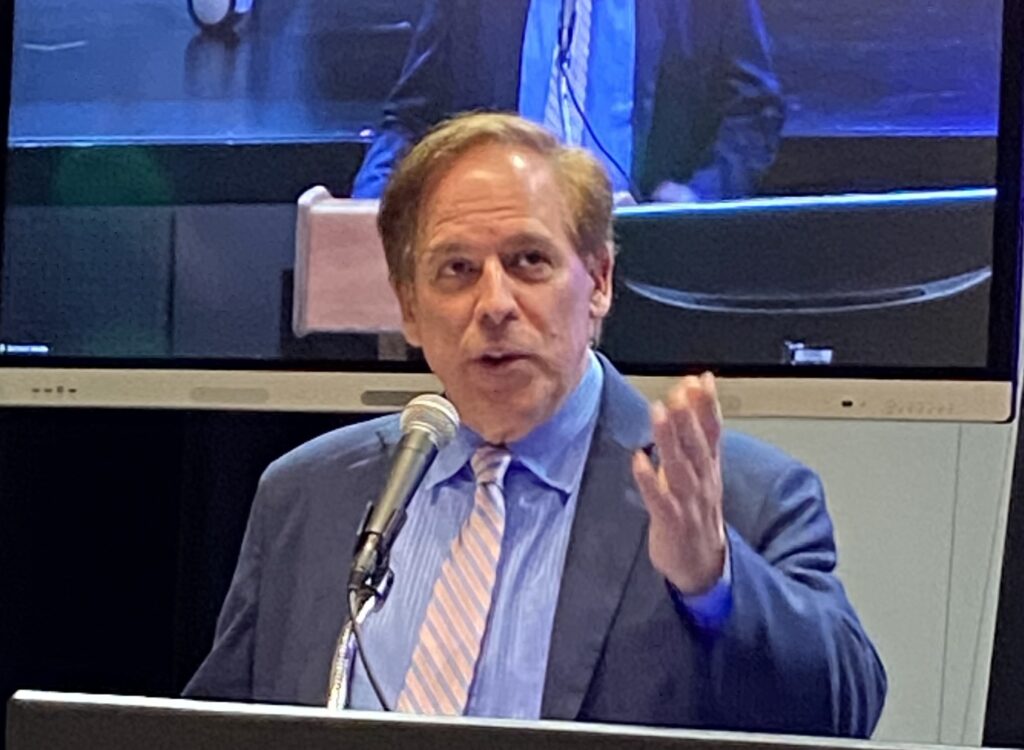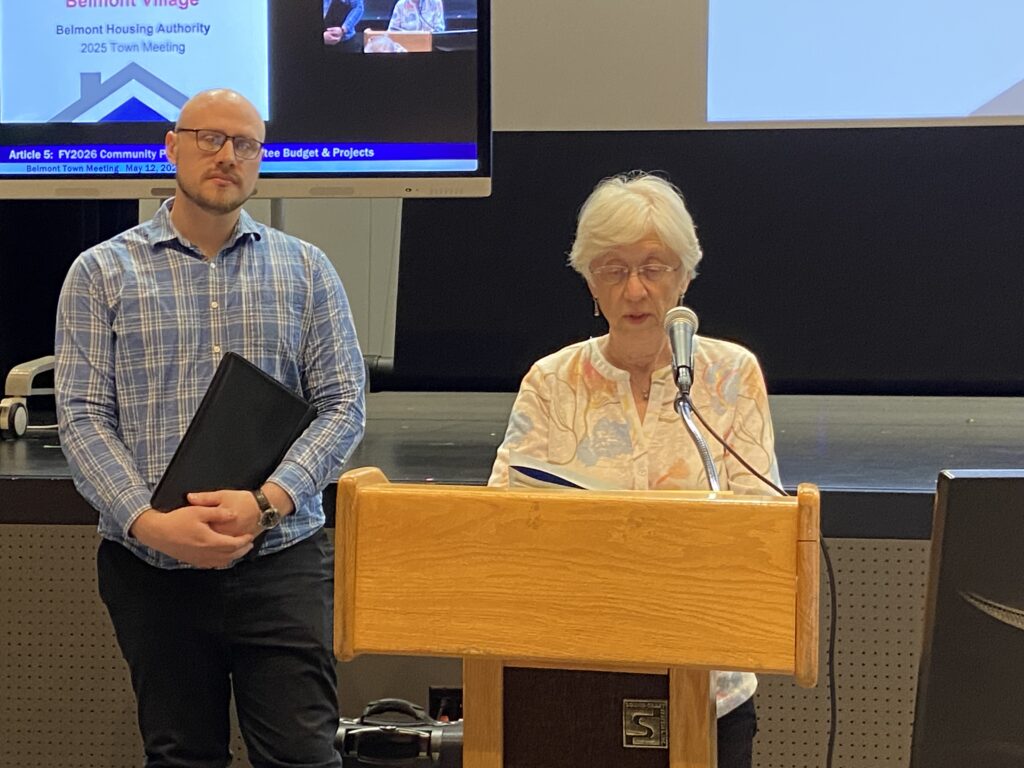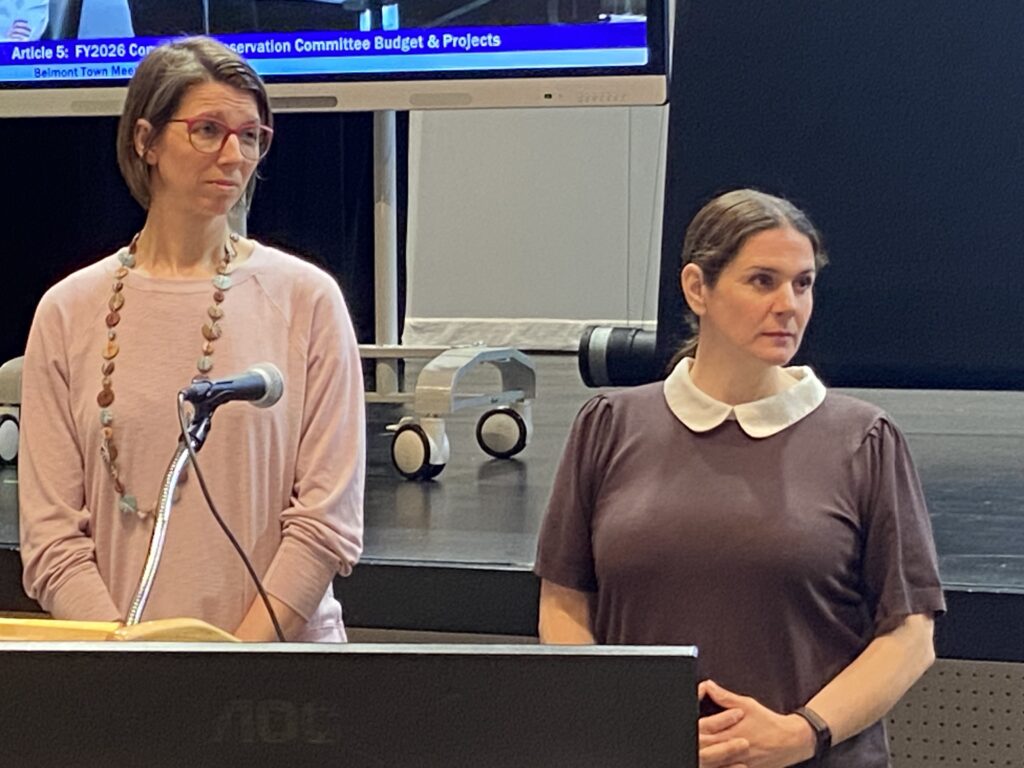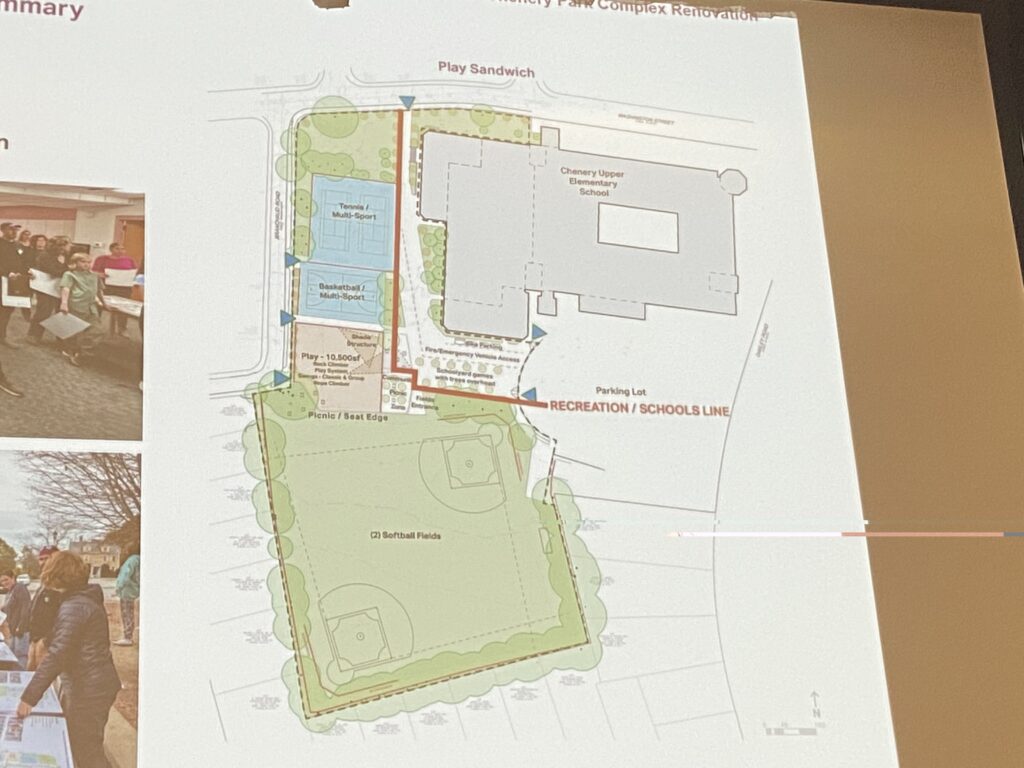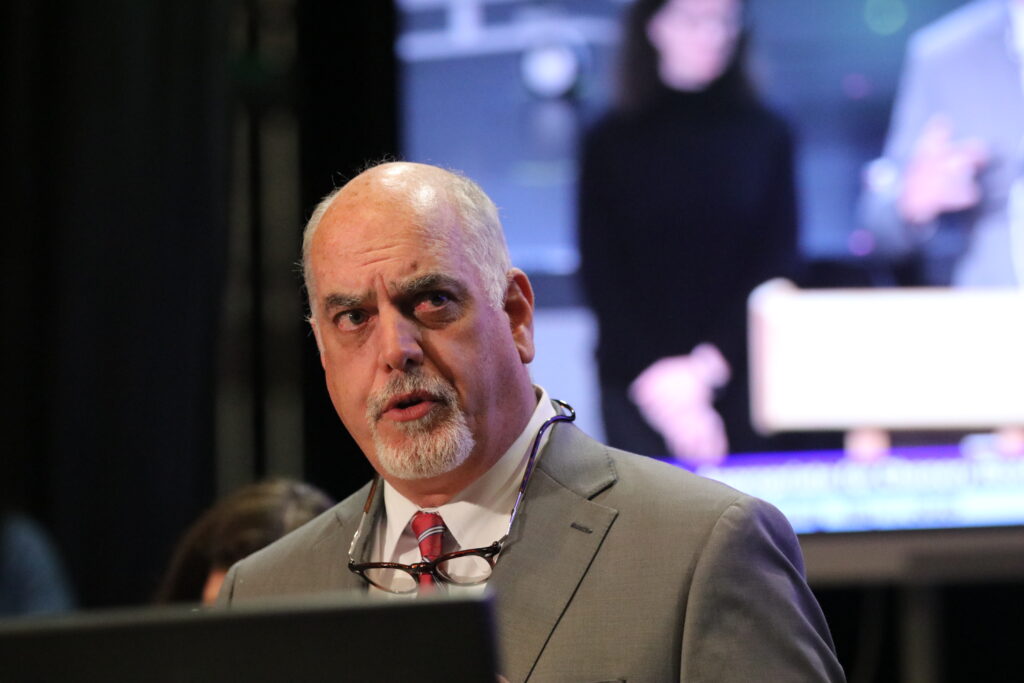Photo: Mina Makarious of Anderson & Kreiger, Belmont’s new town counsel
A date has been set, and the question will be asked to Special Town Meeting members: Will the assembly vote to support a citizens’ petition to force the town to transfer the name of the demolished skating rink onto the replacement facility?
Petition campaigners seek to retain the former name, “James P “Skip” Viglirolo Skating Rink,” onto the new $30 million facility that’s ready to open in the late fall. They stated more than 35 years of tradition and one family’s wishes are paramount over existing town policy and the potential of what the Select Board believes could be a monetary windfall.
It’s still unclear what the Special will be voting on in three weeks as part of an all-hybrid meeting. While that vote will most likely take place virtually on July 23 – the Select Board will vote to open and close the Special’s warrant on Monday, July 7 – just what the members will be voting on now appears to be in the hands of the new Town Counsel, Mina Makarious of Anderson & Kreiger.
As with the citizens’ petition that attempted to halt changes at the town’s senior center that was brought before at the annual Town Meeting in May, Makarious will advise the Select Board and Town Moderator Mike Crowley in June whether there is any relevant town bylaw, general state law, or case law that will either prohibit Town Meeting from proceeding with the move, resulting in the vote being a nonbinding resolution.
“This is the biggest question that we’re asking [Makarious] to suss out: Is this just advisory, or is it binding?” said previous Select Board Chair Elizabeth Dionne.
There is also the real possibility that deciding who gets to name the new rink will remain an open question to be resolved at Town Meeting. “This was some uncharted territory,” said Dionne.
“There are a lot of questions that still have to be answered,” she said, beginning with the rink named in 1998 by a vote of the Board of Selectmen. But there is scant evidence of town or Town Meeting involvement in the process that took place nearly 40 years ago, with no record of the supposed Selectmen vote in the town archieves.
“We’re trying to figure out how it was named in the first place,” said Dionne, noting the board doesn’t know if a monetary gift was attached to that naming. What is known is that the rink was transferred from the School Committee, but not to what town entity took responsibile for its ownership.
“It’s a little tricky who ultimately has jurisdiction over the rink, and we’re tracking that down, whether it’s the Recreation Commission or the Select Board. There’s a lot that’s unknown,” she said.
While Makarious has yet to make his attempt to cut this Gordian knot, Dionne said a preliminary opinion by former town counsel George Hall contends that anything associated with the old building is not bound to the new building.
“There is a distinction between the old building and the $30 million new building,” said Dionne as the new building is a new asset built with a debt exclusion and with Select Board and Town Meeting involvement.
Possibly throwing a wrench into the process is the expectation the Select Board will approve a new town-wide naming policy at its July 7 meeting, beefing up the existing one-page policy written by then Select Board member Adam Dash in 2018. A four-page draft of the new policy presented at the board’s June 23 those seeking to name a town asset after a specific person would require passing over a set of high hurdles of presenting a proposed honoree’s notable achievements. It’s likely Makarious will be asked to determine whether the petition falls under the perview of the current or new naming policy.
Which ever way Makarious decides, a change in the naming policy town-wide is much needed, said Taylor Yates, the Board’s vice chair.
“We needed a better naming policy than what we have, and we put a lot of work into making, what to me, looks like a really good one,” said Yates. “We’re basically two weeks away from adopting it, and I don’t feel great about what feels like [the citizens’ petition is] jumping the gun.”
Once the new policy is adopted, “then we can say, our policy … says this, and this is how we’ve interpreted this case,” said Yates.
Matt Taylor, who took over the helm of the Select Board on July 1, said the three-member board should have a discussion on the name of the rank. “Having this drag out without some clarity is part of what has triggered this petition in the first place. I think we should have that discussion and and a ‘yes’ or ‘no’ vote before the [Special] Town Meeting.”
Gail Harrington, who is James Viglirolo’s youngest child and has helped spur on the petition, said the group submitted proposals to name the new rink for Viglirolo’s under the town’s current naming policy in January and April. After it had not recieved a formal response from the Select Board and to show broad community support, Harrington said it used the citizens’ petition process to ensure the town holds a “public meeting” perscribed under the existing policy.
That public meeting would bring attention to “many community members were not aware of the potential of the rink being named something other than to honor Skip,” said Harrington.
But the family was a little too successful collecting signatures to promote their claim. Harrington told the board at its June 23 meeting the petitioners were attempting to have their request placed on the scheduled fall Special Town Meeting in October. But the pentitioners passed the 200 signature mark in which under state law requires the town to hold a Special Town Meeting within 45 days.
The Vigilrolo family’s decision to go the citizens’ petition route was personally frustrating, said Dionne.
“We have been working on a naming policy for months now. We expect to finally approve it. I’m very concerned about the precedent this sets,” said Dionne, who is the lead author of the new policy.
“We haven’t named our high school after a person. We haven’t named our library after a person. And if you were asking me, I think there are a lot of very worthy people, including Glenn Clancy, who just served the town for 41 years,” said Dionne.
“If Town Meeting is going to be asked to weigh in on this asset, Town Meeting can also be asked to weigh in on any other asset in the town. So it makes a very negative precedent. This is, in my mind, in opposition to good management.”
